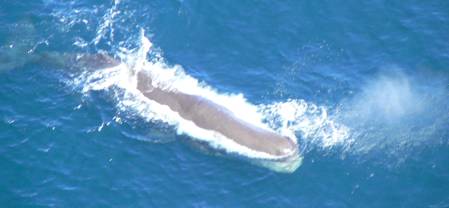TNRTB Classic: Sperm Whales
In Genesis 1 God commanded the human race through Adam and Eve to use and care for Earth’s resources for the benefit of themselves and all life.1 Our planet and its resources form a very complex system; and managing them wisely, even in this day and age, can be a daunting task.
Whales present a prime example of resource management gone wrong. The past three centuries of the whaling industry have driven most whale species to near-extinction. However, in the context of the present concern over global warming, some pundits argue that the demise of the whales may have been a good thing.
As enormous warm-blooded animals, whales respire huge quantities of carbon dioxide—a potent greenhouse gas—into the atmosphere. Additionally, whales eat a lot, consuming huge quantities of krill, fish, sea mammals, and squid. Some people have wondered if the rest of sea life would be better off without whales.
Recent research, however, shows that whales may be more eco-friendly than previously thought. A team of biologists and oceanographers, led by Flinders University biologist Trish Lavery, discovered that sperm whales—in spite of respiring huge quantities of carbon dioxide—actually are responsible for removing far greater quantities of this greenhouse gas from the atmosphere.2 As the team discovered, credit for sperm whales’ contribution to relieving the planet from its current global warming crisis goes to its diet.
To find out more about sperm whales’ contribution to the fight against global warming and to the sustaining of the entire marine ecosystem, check out this previous TNRTB.
Happy New Year!

Figure 1: Sperm Whale Surfacing
A sperm whale can hold its breath longer than any other animals, for up to 90 minutes. When it surfaces its breathing spray can rise up to 15 meters (50 feet).
Image credit: Bobisbob





